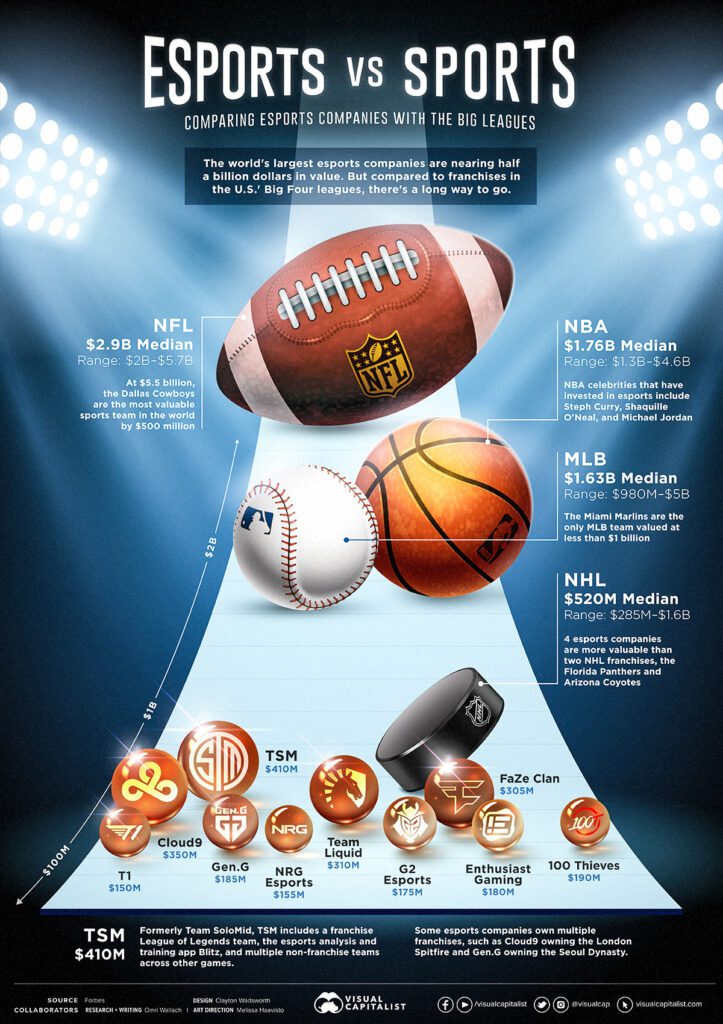The rise of esports has challenged the dominance of traditional sports such as soccer, basketball, and football. Both forms of sports have significant social impacts on society, with traditional sports promoting a sense of community and collective identity while esports bring together people from different backgrounds and offer opportunities for socialization. The financial impact of esports is rapidly growing, although the revenue distribution differs from traditional sports. The audience demographics of esports are more diverse, with a younger audience and a more balanced gender mix. Training and preparation also differ greatly, with traditional sports requiring physical fitness and conditioning, while esports require cerebral preparation and coordination. Sponsorship is an essential component of both forms of sports.
Esports Vs Traditional Sports: A Comparative Analysis
Introduction
For decades, traditional sports such as soccer, basketball, and football, have been the most popular form of entertainment worldwide. However, the emergence of esports has significantly shifted the trend.
Esports, also known as electronic sports, are competitive video games played by individuals or teams on various platforms. The competitive nature of esports, combined with its global reach, has made it an appealing choice for modern-day audiences.
This article seeks to compare esports and traditional sports, highlighting the similarities, differences and analyze their impact on modern-day society.
Social Impact
Both esports and traditional sports have a significant social impact on society.
With traditional sports, there is a sense of community and collective identity. Fans bond over their shared support for a team, creating a sense of belonging and camaraderie that can last a lifetime. Traditional sports are also known to foster values such as teamwork, leadership, and discipline, which can prove invaluable in all areas of life.
Esports, on the other hand, have a more significant impact on a global level. They bring people from all walks of life together, regardless of gender, race, or physical ability. Esports offer a space where individuals can compete on an equal footing, fostering a sense of inclusivity and acceptance.
Esports also provide valuable social opportunities for young people. They offer a platform to meet and socialize with like-minded individuals, which can be hugely beneficial for those who struggle with socializing in traditional settings.
Financial Impact
The financial impact of esports is significant, and it continues to grow. In 2021 the global esports market was worth approximately $1.08 billion, with a projected growth rate of 14% per year.
Traditional sports are also hugely financially profitable, with the sports industry generating approximately $91 billion in 2021. However, the difference lies in how the money is distributed. Esports tend to have distributed prize pools, with individuals or teams taking home cash prizes. In contrast, traditional sports are backed by large organizations that decide how the revenue is distributed. Thus creating a clear corporate structure.
Audience Demographics
The audience demographics of traditional sports tend to be mostly male, with an average age of 35-49. In contrast, esports have a more diverse audience. Their audience is younger, with an average age of 18-34, and has a more balanced gender mix.
Esports also have a higher proportion of tech-savvy individuals, whose interests go beyond traditional sports, which has helped elevate esports to new heights. The tech sector has invested heavily in esports, which has contributed to the growth of the industry.
Training and Preparation
Training and preparation differ greatly between traditional sports and esports.
Traditional sports require physical fitness and conditioning, with athletes undertaking rigorous training regimes to enhance their performance. In contrast, esports require a high degree of cerebral preparation and hand-eye coordination, with players undergoing extensive practising throughout the day daily.
Both forms of sports require dedicated resources for training and preparation, as competition is fierce, and winning requires a high degree of skill.
Sponsorship
Sponsorship is an essential component of both traditional sports and esports.
Traditional sports tend to be sponsored by large companies and brands, and these sponsorships tend to be exclusive. In contrast, esports sponsorship tends to be more diversified, with a greater variety of brands sponsoring players and teams.
Final Thoughts
The growth and success of esports have helped elevate it to traditional sports’ level, and it is highly likely that esports will continue to grow in popularity in the coming years. Both traditional sports and esports have their unique strengths, and it is important to recognize how they impact society in various ways.
Ultimately, whether you prefer traditional sports or esports, what matters most is that you have a passion for it.
